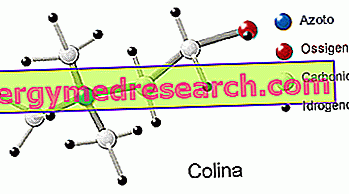Related articles: Respiratory failure
Definition
Respiratory failure occurs when the respiratory system fails to maintain an adequate level of oxygenation in the blood or elimination of carbon dioxide. These potentially fatal alterations may occur due to impaired respiratory gas exchange and / or reduced ventilation.
Hypoxemic respiratory failure is the most common form: it occurs when the oxygen concentration is low; therefore it can be found in all the pathologies involving the lungs. Some of the most frequent are pulmonary edema, pneumonia, embolism and pulmonary fibrosis.
In the case where there are high levels of carbon dioxide in the blood we speak, instead, of hypercapnic respiratory failure . This form can be found in case of asthma, chronic obstructive pulmonary disease (COPD), in poisoning / overdose of drugs or drugs (eg barbiturates) with depression of respiratory centers and in the conditions that cause weakness of respiratory muscles (eg myasthenia gravis, botulism and damage to the central or peripheral nervous system).
Furthermore, there are forms of acute (rapid onset) and chronic respiratory failure (persisting for months or years before developing into acute forms).
Most common symptoms and signs *
- Respiratory acidosis
- Adynamia
- anguish
- Arrhythmia
- asphyxiation
- Asthenia
- Cardiomegaly
- Cyanosis
- Dyspnoea
- Distension of the neck veins
- Chest pain
- Hypercapnia
- Hypertrophy of the accessory muscles of respiration
- Hypoaesthesia
- Hypoxia
- myoclonus
- orthopnea
- Pallor
- Wheezing breath
- Sense of suffocation
- Drowsiness
- Confusional state
- Squeal
- Sweating
- Fainting
- Tachycardia
- tachypnoea
Further indications
Symptoms vary depending on the cause causing respiratory failure. Common manifestations include wheezing, dyspnoea, tachypnea (increased number of breaths), tachycardia, profuse sweating, cyanosis (bluish coloring of skin and mucous membranes) and vigorous use of accessory respiratory muscles at rest. The manifestations affecting the central nervous system range from mental confusion, dulling of the sensory, drowsiness and loss of the senses. Without therapy, cardiac arrhythmias and respiratory arrest can occur. Patients with chronic respiratory insufficiency often also have pulmonary hypertension and decompensation of the right sections of the heart (pulmonary heart).
Diagnosis is made with clinical evaluation, supplemented by blood gas analysis and chest radiography.
Treatment varies depending on the pathology from which respiratory failure originated, but often includes assisted ventilation and oxygen. Once the acute symptoms have stabilized, the basic condition is corrected.



